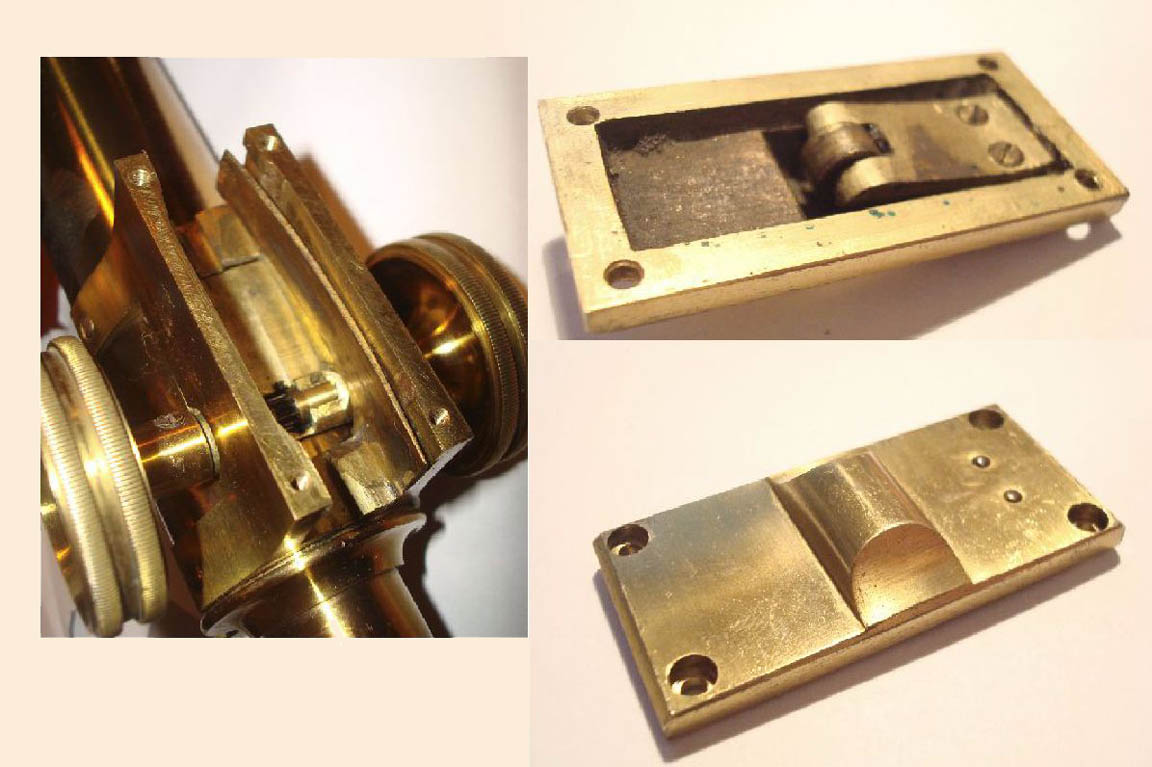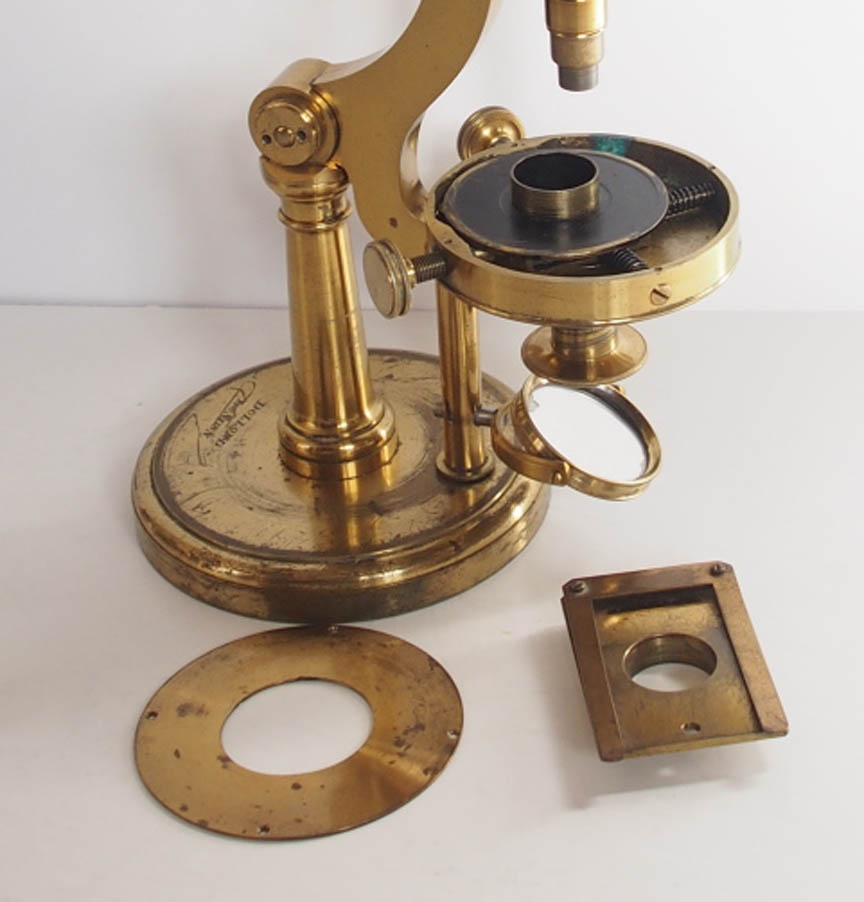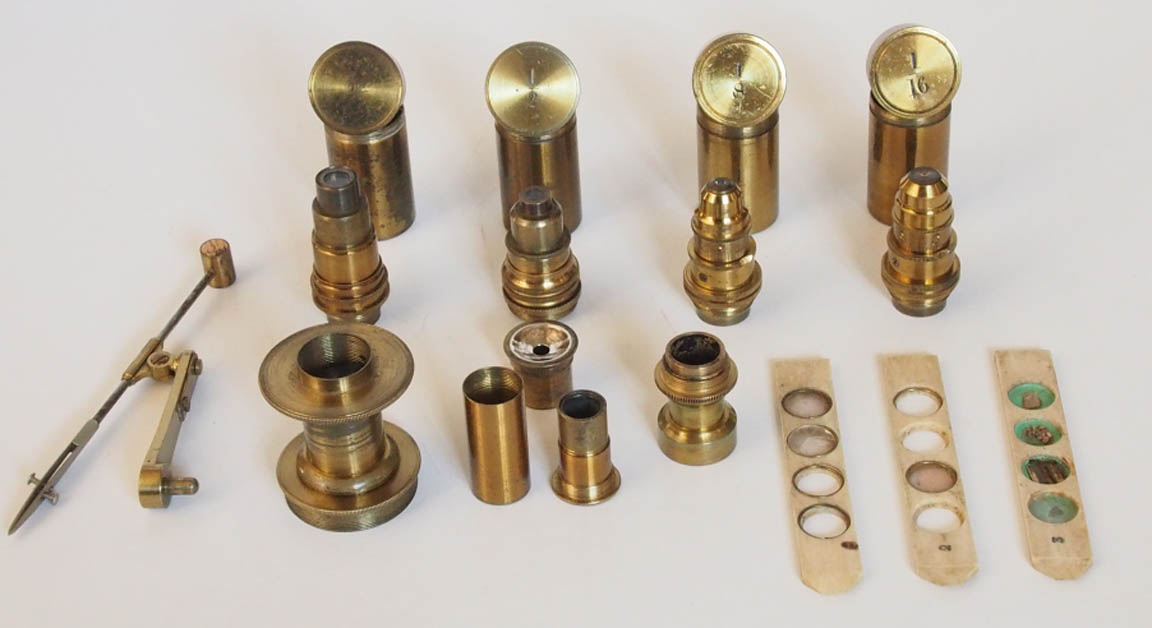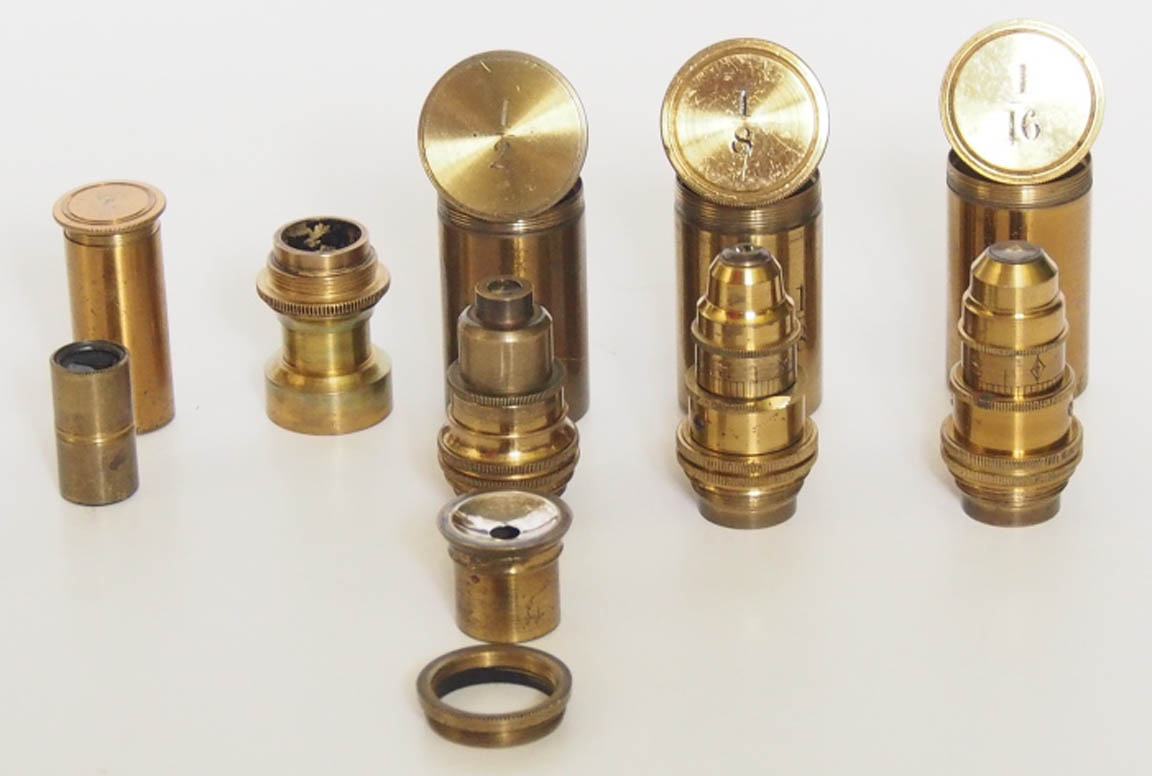| DESCRIPTION | HISTORY |
Please Click On Any Picture for a Larger Version
 The coarse focus is operated by two knurled heads working through a pinion carried within a slider attached to the body tube, the mechanism being internally sprung by a roller bearing from the other side to eliminate any forward and backward slack and also sprung from the right side internally to prevent right-left slack. The rack is embedded into the upper part of the front of the limb.
The coarse focus is operated by two knurled heads working through a pinion carried within a slider attached to the body tube, the mechanism being internally sprung by a roller bearing from the other side to eliminate any forward and backward slack and also sprung from the right side internally to prevent right-left slack. The rack is embedded into the upper part of the front of the limb. The circular mechanical stage is 3 ½ inches(89 mm) in diameter. Movement is accomplished by two knurled knobs positioned in the 135 degree & 225 degree positions, at right angles from one another to move the central rectangular stage plate. There is a single U-shaped stage clip to hold the slide. The rectangular stage support has a hole into which the stage forceps fits.
The circular mechanical stage is 3 ½ inches(89 mm) in diameter. Movement is accomplished by two knurled knobs positioned in the 135 degree & 225 degree positions, at right angles from one another to move the central rectangular stage plate. There is a single U-shaped stage clip to hold the slide. The rectangular stage support has a hole into which the stage forceps fits.  Accessories include a generously proportioned stage forceps, polarized light apparatus, plus three bone sliders numbered 1,2, and 3.
Accessories include a generously proportioned stage forceps, polarized light apparatus, plus three bone sliders numbered 1,2, and 3.  When purchased, two early Powell objectives 1/8 in. and 1/16 in. were present. Since then a pre-RMS Powell ½ in (with Lieberkuhn) , and 2 inch objective were added to the set. The 1/16 inch (dry) objective has an exceptionally short working distance, and a N.A. of approximately 0.64 characteristic of the earliest version of this objective as first developed by Hugh Powell in 1840.
When purchased, two early Powell objectives 1/8 in. and 1/16 in. were present. Since then a pre-RMS Powell ½ in (with Lieberkuhn) , and 2 inch objective were added to the set. The 1/16 inch (dry) objective has an exceptionally short working distance, and a N.A. of approximately 0.64 characteristic of the earliest version of this objective as first developed by Hugh Powell in 1840.  HUGH POWELL
HUGH POWELL In 1840, the newly formed Microscopical Society commissioned
In 1840, the newly formed Microscopical Society commissioned Messrs Hugh Powell, Andrew Ross, and James Smith each to furnish a standard instrument made to their own peculiar views.